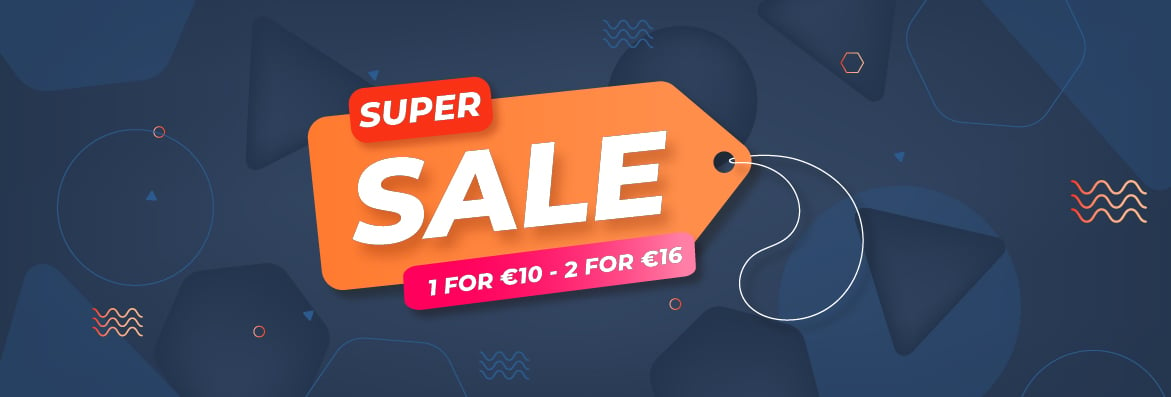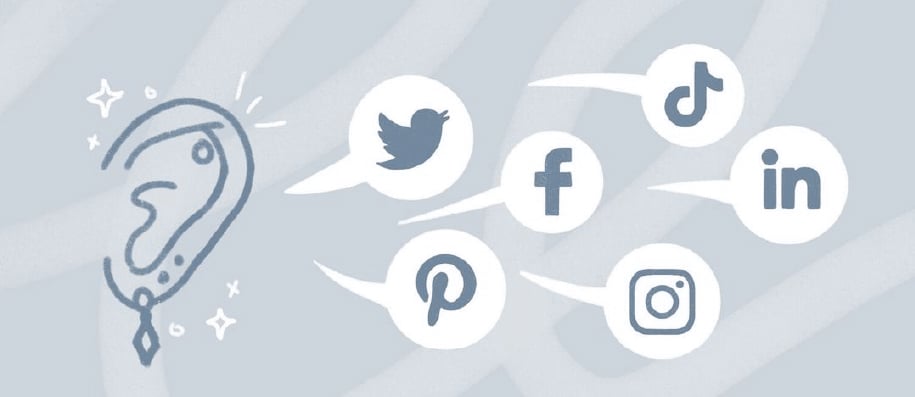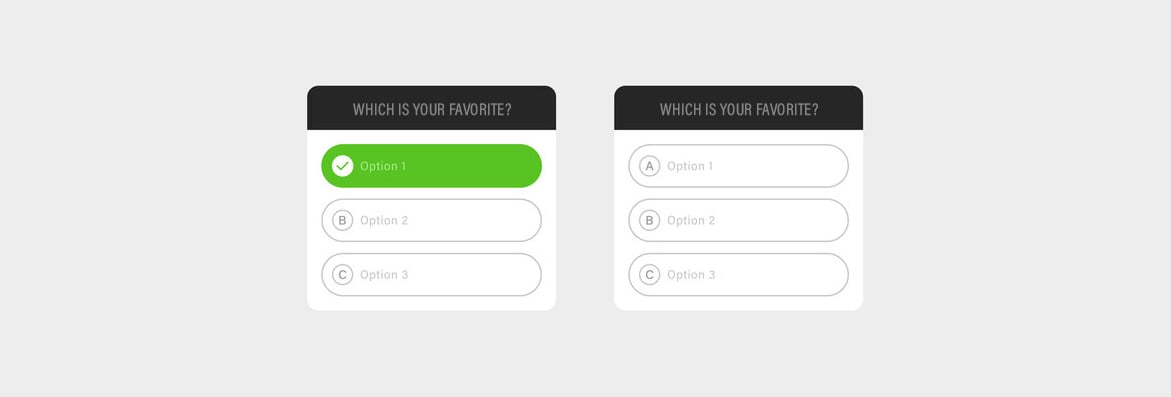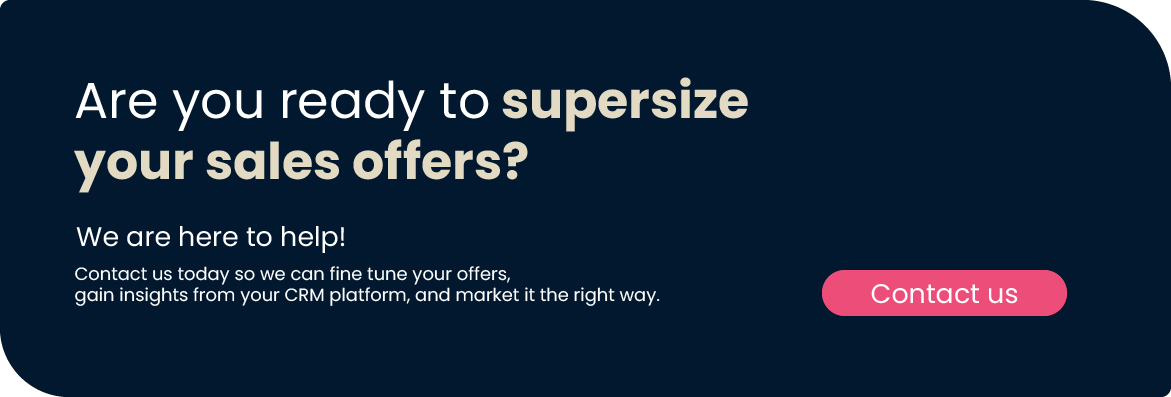Imagine this: You created the perfect sales offer, did the marketing, and waited for the money to roll in… but it didn't. Why? Where did it go wrong?
As marketers, business owners, or salespeople, we like to think that an offer is so good that it will be impossible for customers to say “no” to it, but your customers may disagree with you. They may still decide to pass on an offer that you thought about for a long time.
You have to do something to make the sales offer work. You could decide to pour money into paid ads, get influencers involved, or let your sales people push the offer in-store, but still, the results aren’t meeting your expectations.
Maybe the problem isn’t your sales or promotion strategy; maybe the problem is the actual offer. It isn’t attractive enough, so you have to tweak it.
Where Did It All Go Wrong?
Let’s go all the way back: In your mind, you created an irresistible offer. It contains products that represent your business and which your customers buy frequently, the price point is right, and the marketing is exciting. The problem is at the very beginning — only in your mind, this is a great offer.
What about what your customers think about the offer?
It’s probably something entirely different from your ideas. You’re so deeply entrenched in your business, products, and services that they start to hold a different value for you versus for your customers. Your perceived value of a product is automatically higher than what anybody else cares about, but things are only worth as much as people are willing to pay for it.
An Example

Let’s consider this situation as an example. You own a retail shop, and analytics show that many customers buy a bottle of body wash every three months. The bottle is priced at €10, so you believe a great offer would be two bottles for €16. Yet, sales aren’t even close to what you hoped for.
Customers may feel that this sales offer isn’t that great for many reasons. They may not want to buy two bottles at once because they don’t have storage space or the budget for it. They might be holding out for a promotion on a more luxurious body wash, or maybe, they were hoping to have the body wash paired with a body lotion.
The offer you created is’t what your customers wanted. They may have preferred a single bottle at a lower price, a better body wash at a special price, or a bundled offer with a different product. All of these could result in higher sales, and happier customers.
Anticipating Popular Shopping Days
Poorly performing offers can be disheartening, especially if they occur with historically good sales’ times like Black Friday, Cyber Monday, December holidays, or Valentine’s Day.
Just like you have expectations for your sales offers, customers also have expectations when it comes to these days. They want deep discounts, excellent deals, and promotions that excite them. They also want access to products or services that they can’t usually afford. If you don’t give this to customers, they know it, and they won’t give you the expected support.
The only option is to tweak your offer so that it appeals more to customers.
The End Goal of All Sales Offers
When you create an offer, you do it with only one goal in mind: To sell more products.
But how do you do that? By producing the most irresistible offer that customers just can’t say “no” to. It comes down to changing customers’ behaviour by altering their psychological buying pattern.
For example, a popular product you sell could be priced at €30. You get the product at a lower price from your supplier, so you decide to create a 3 for the price of 2 offer. If a customer had to buy three products at €30, then they would usually pay €90, but with this deal, they only pay €60 which is €20 per product.
Logically, customers would take to this offer because you are breaking their previously held thinking model on price for this specific product. This is just one example of an offer that makes sense to customers.
Creating an Irresistible Offer
Now that we’ve established that sales offers need to be enticing for customers, let’s look at a few strategies to develop those offers. Note though, that there is no “one size fits all” approach to finding a bulletproof offer; you have to consider what’s best for your customers.
Use Social Listening
When crafting a sales offer, start with the people you are creating it for — your customers. You want to come up with an offer that makes sense to them so it’s best to find out what they want good deals on.

The easiest way to get this information is to use social listening. With social listening, you make an effort to learn more about your customer’s needs, wants, and problems in the areas they frequent. It could be a social media page, Facebook groups, Reddit, or even comments made on your or your competitors’ adverts.
Search websites using hashtags or keywords that are important to your business, or simply browse through discussions to reveal what customers are talking about. For example, you might be a clothing retailer and realise that many customers talk about wanting to buy t-shirts at a reasonable price. Use this information to craft your offer.
Get Another Perspective
At the start of this article, we established that a big issue with poorly-performing sales offers is that the person creating the offer might think it’s great while customers have a differing opinion. You become blind to the offer’s shortcomings.
Overcome this problem by getting a different perspective on your offer. Present the offer to various people and ask for their opinion and how they would improve it. You could ask other people in your company, friends, and your customers.
Why not use your offer as an opportunity to connect with your customers? Come up with several versions of a sales offer that you are comfortable putting out there, then present these offers on your social media accounts, in-store, or in a newsletter, and ask customers to vote for their favourite one. Not only will it tell you what offers perceive as valuable, it also makes them feel heard in the process.

Platforms such as HubSpot can also be beneficial because it allows you to collect customer information that can be used as an alternative perspective. Use this information to inform upcoming sales offers and to capture feedback about previous ones.
Give Value and Make a Profit
Whatever offer you come up with, it has to serve two purposes. One, it needs to provide value to customers, and two, you want to make a profit. It can be challenging to balance these two purposes, especially since offers usually require you to give up some portion of your profit. There is an argument for this, and ways to minimise the impact of offers on your bottom line.
The Case for Deep Discounts
Giving deep discounts can seem like you are not making a profit because you are selling things at a price that makes sense to you. If you look at it from the customer’s perspective, you may realise that they will buy from you more easily if you decrease the price drastically.
It shouldn’t always be the case. You have to determine whether a deep discount is sensible, and in one case, it is. The acquisition costs to secure a new customer are high so offering a deep discount on a product you know they want can be the way to convert them. In this case, the deep discount is more useful because of the long term benefits and the potential of securing a loyal customer.
Bundled Offers
Once you have loyal customers, you also need to provide sales offers that are appealing to them. Remember, it costs much less to retain a customer than to acquire a new one. An easy way to do this is to create offers by bundling products together.
With bundled offers, you put several products together as a special package and sell it for a single price. It allows you to make a higher margin on your main item while covering your costs (or making a small profit) on additional products.
A typical example of this is seen at fast food chains where customers can order a combo meal that costs less than ordering items separately. For example, the combo could include a burger, chips, and cold drink for €10. Separately, these items could have totalled to €15, so choosing the combo meal makes sense to customers.
Bundling products also makes sense for higher cost items. For example, you might sell high-end tech products. You know that many people show interest in 3D printers, but they are put off by the knowledge that they will have to buy a bunch of other products like filament and nozzles. To overcome this, you bundle the 3D printer with a box of filament and two spare nozzles at a price that is marginally higher than buying the printer alone.
Bundled offers work because the smaller products increase the perceived value of the bundle. Frequently, customers actually end up spending more than they anticipated because they feel they are getting a better deal, which may result in a bit more profit for your business even if you are selling the peripheral items at a low cost.
Create a Sense of Urgency or Scarcity
The more time customers have, the longer they will take to make use of a sales offer which may result in them missing out entirely because they forget about the offer or finding something else they want to spend their money on instead. Overcome this issue by creating a sense of urgency or scarcity around the offer.
For example, you could own a clothing retailer and decide to give a 20% discount on all jeans. Make this offer more attractive by saying it’s only valid for 24 hours.
Another scenario is that you want people to visit your store (online or physical), but you want to retain more profit. In this case, you could offer a free gift or a deep discount on a certain item but only for the first 50 buyers.
In both cases, customers are forced to act quickly if they want to get a good deal.
Keep It Simple
Customers want to shop easily; they don’t want to struggle with how a deal works. For instance, saying customers have to buy a t-shirt and jeans to get a 20% discount on a specific pair of sneakers is too complicated.
You have to make it easier. For example, you could bundle the jeans, t-shirt, and sneakers into a single offer. Another option is to say that customers get 10% off if they buy for €100, 15% off for €150, and so on.
Stick to the basics. If you need to give a lengthy explanation of how an offer works, then it’s too complicated.
How Can We Help You With Your Offer?
Sales offers are an important part of business and help to satisfy a loyal customer base. It’s also a good way to convert potential customers, but only if the offers are appealing to them.
Think about your previous and current offers. Are there any sales offers that didn’t perform well? Investigate why this is the case. Now do the opposite. Evaluate successful offers and identify what you did right that time. Focus on tweaking all your offers to keep your customers happy.
Don’t forget to tell customers about your offer. Social media is one way you can let them know. Another option is to send a dedicated email to customers telling them all the details and linking to the relevant products directly.





